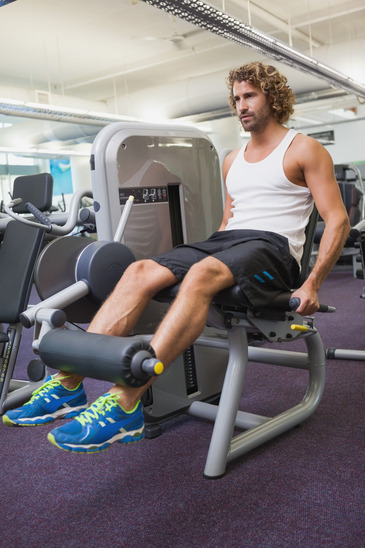 As you have probably discovered yourself, completing a leg workout is immensely satisfying because you know that you are taking steps to build bigger stronger legs.
As you have probably discovered yourself, completing a leg workout is immensely satisfying because you know that you are taking steps to build bigger stronger legs.
However the major drawback is that if you are working your legs really hard with squats, lunges, leg extensions, leg presses and calf raises, for example, you will often feel the pain and the tiredness in your legs for several days afterwards.
So in this article I want to discuss some of the ways that you can reduce recovery times after a leg workout so that you have the strength to perform two of these workouts per week rather than one, which is what a lot of people settle for.
Exercise Regularly
Once you get into the habit of working your legs, you need to continue regularly because if you only work them every so often, you will feel the pain in your legs for several days afterwards.
Similarly if you sometimes take a break from leg routines and don’t work them for two or three weeks, you will find that it takes a lot longer to recover once you restart your routines.
So you should look to perform your leg exercises at least once a week because you should find that your recovery times will naturally shorten once your legs adapt to regular exercise.
Do Some Light Cardio On The Same Day
I myself only do a complete leg workout twice a week at the most, but one of the reasons why I am able to do this is because doing some light cardio on the same day seems to help shorten recovery times.
I discovered that sitting down all day after a leg workout is a very bad idea because my legs always seemed to stiffen up and ache even more. So I now try to do a light workout on the exercise bike or do 30-45 minutes of walking on the same day shortly after the workout as this gets the blood flowing and really seems to help.
Hot / Cold Showers And Baths
It’s hard to say for sure whether a hot or cold shower (or bath) is more beneficial because there are many conflicting views on this subject.
Therefore it’s worth experimenting with both to see which one is of most benefit to you because many people find that one or the other helps reduce muscle aches quite considerably.
You could also try having a contrast shower (or bath) where you use hot water followed by cold water, for example 4 minutes of hot water followed by 1 minute of cold water, because there is growing evidence that this can really help with recovery after any kind of workout.
Ice Packs
If you find that you are really suffering from sore muscles immediately after your leg workout, then placing an ice pack on the affected areas may provide short-term relief.
You might also want to experiment with a heat pack if this doesn’t work, but I personally find that I can get instant relief just by taking a hot or cold shower, and don’t really need a hot or cold pack after that.
Stretching
I don’t really believe in stretching too much before a strenuous leg workout because I’ve always found that too much stretching diminishes my performance and has no noticeable benefit. A few light stretches is more than enough in my opinion, but I know that some people prefer to do stretches before and after their routine.
It is, however, a good idea to do some dynamic stretching exercises immediately after a workout in order to stop your muscles tightening up.
Foam Rollers
One thing you can do to ease muscle pain and fatigue after you have done some intense squats and lunges, for example, is to use a foam roller to bring some much needed relief. If you do a search on YouTube, you will find lots of gentle stretches that you can do after your workouts to release tension and tightness between the muscles.
Diet And Supplements
If you are taking the time to work your legs once or twice a week, you obviously need to give them enough fuel to grow and recover because these are some of the largest muscle groups in your body.
Therefore it’s a good idea to consume lots of (clean) calories on leg days, including lots of protein to help your muscles grow. It’s also a good idea to take supplements such as creatine or glutamine, for instance, because these can both help to shorten recovery times.
Final Thoughts
It’s important to point out that your ultimate goal should not be to eliminate pain and soreness altogether. Once you get to this point, it’s a surefire sign that your leg workout has become too easy and your legs are now in a comfort zone.
A little bit of muscle soreness for a day or two afterwards is perfectly natural after a gruelling workout. So don’t be afraid to squat using heavier weights, perform forward and backward lunges using a heavier set of dumbbells, and up the resistance on the leg press, for example.
The whole point of this article is to demonstrate how you can shorten recovery times, not eliminate pain and discomfort altogether because this is virtually impossible if you are working your legs hard.
Leave a Reply